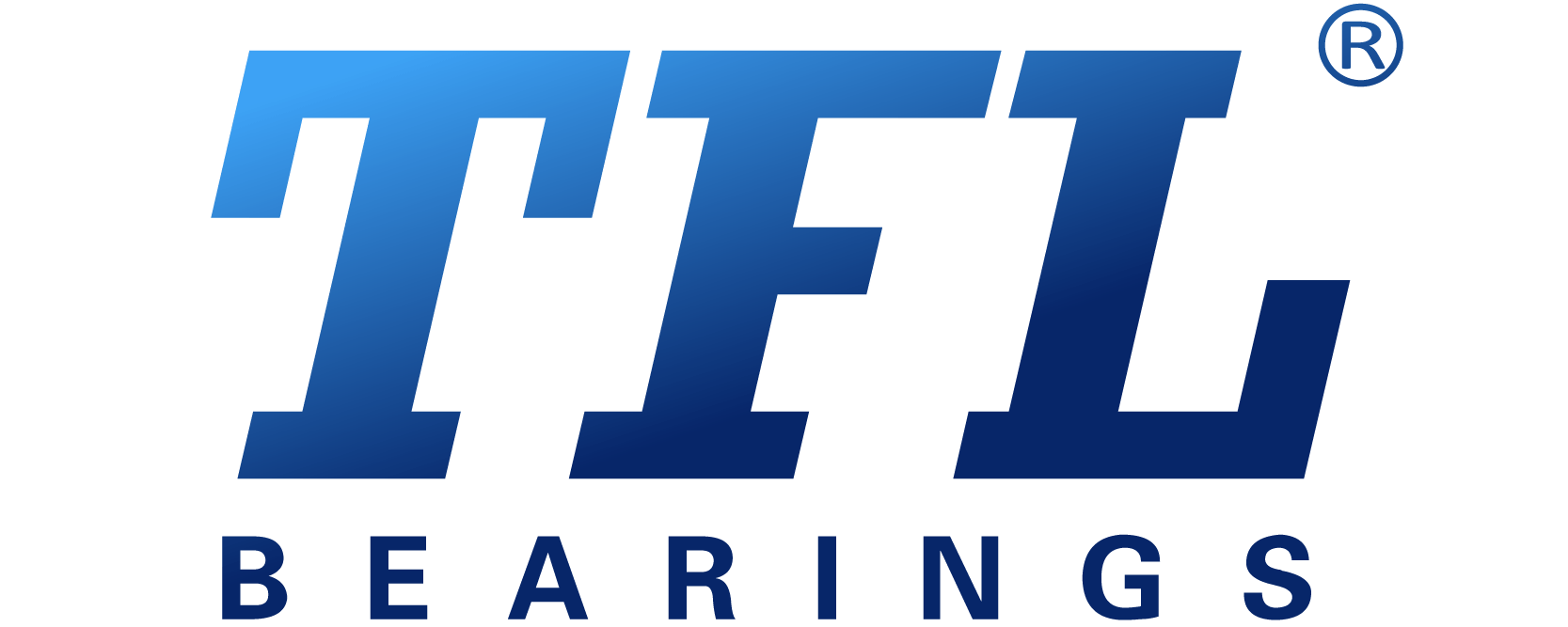Types of Insulated Bearings: Enhancing Electrical Protection in Industrial Applications
Introduction to Insulated Bearings
An insulated bearing is able to block the passage of electric current; the bearing itself has insulating properties of the general term; it assumes the function of electrical insulation, protection of motors and generators and other equipment to ensure that the equipment can operate safely. Insulated bearings have a wide range of applications, covering electric power, railroads, machinery and metallurgy, mining and fossil and other industrial industries.
What are Insulated Bearings?
Insulated bearings are coated with a layer of insulating material on the outer or inner ring of the bearing through a special process, or the rolling body of the bearing is made of ceramics so that the bearing is insulated and avoids galvanic damage caused by induced currents to the bearing.
The Importance of Electrical Insulation in Bearings
Bearings play an important role in motors and other rotating equipment. The importance of electrical insulation of bearings is mainly reflected in the prevention of galvanic corrosion of the current on the bearings, to protect the grease and rolling elements and raceways from damage, and to achieve the role of improving the service life of bearings.
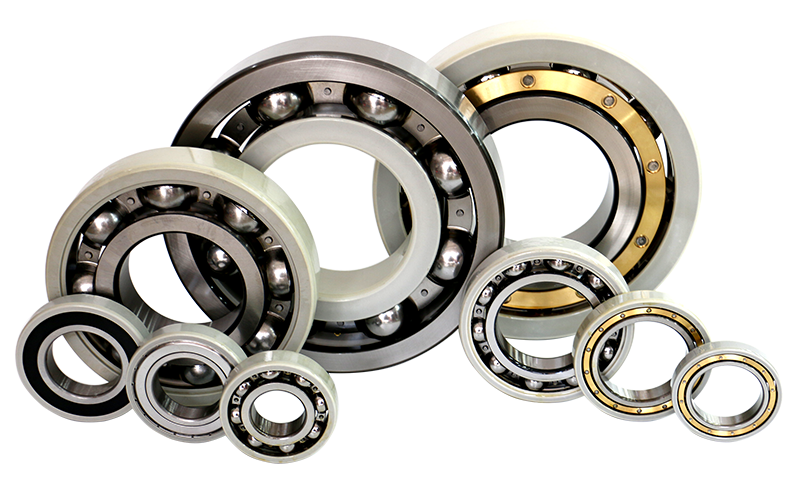
Common Applications of Insulated Bearings
Insulated bearings have a very wide range of applications. The continuous development of various industries, including the power industry, railroad facilities, machinery and metallurgical industry, mining and petrochemical industry, etc., all reflect the importance of insulated bearings.
TFL’s Commitment to Quality Insulated Bearings
TFL is guaranteed by good reputation and high quality products. The electrically insulated bearings are made of a special spraying process and Silicon Nitride, Zirconia Materials, which have excellent insulating and wear-resisting properties. The characteristics of the products are very good in various industrial applications, and the reputation is trustworthy.TFL Bearing Company always adheres to the original intention of making high-quality insulated bearings and providing high-quality service.
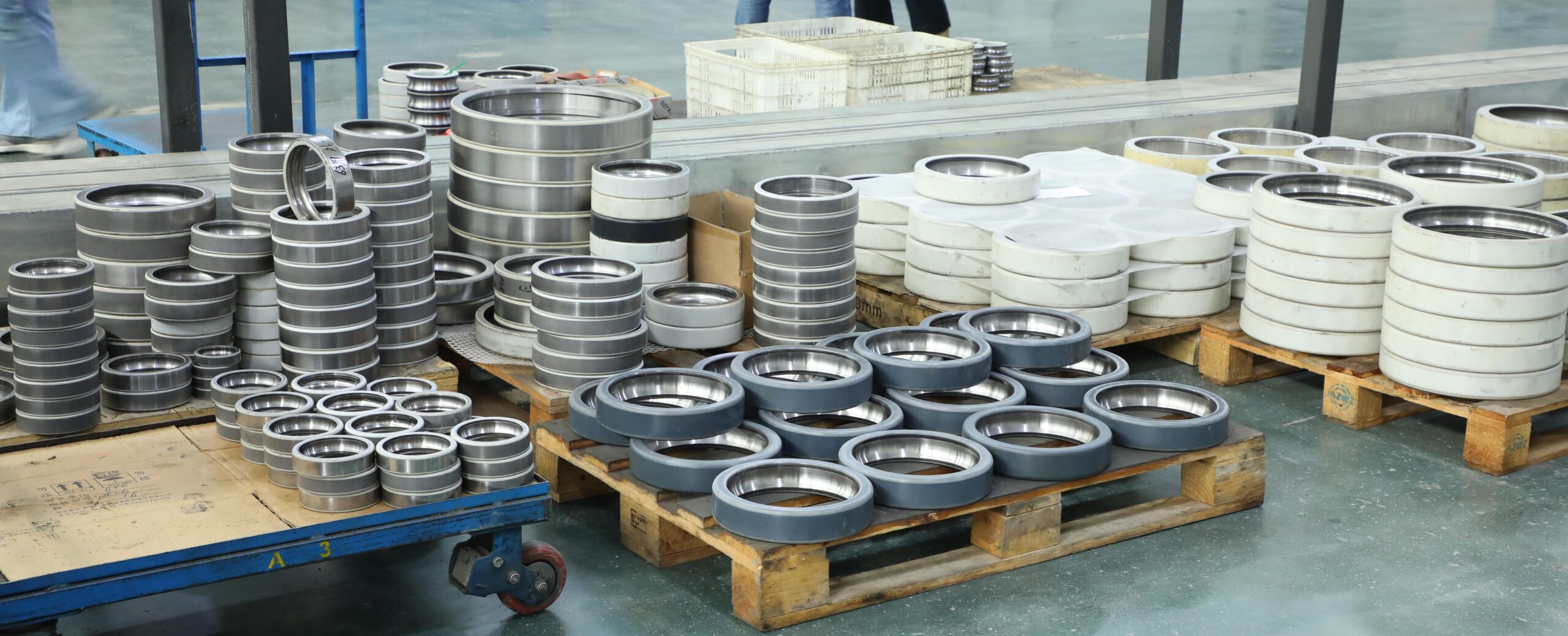
Types of Insulated Bearings
Insulated bearings can be classified into various types according to the type, such as ceramic insulated bearings, hybrid bearings with silicon nitride balls, coated insulated bearings, oil-lubricated insulated bearings, insulated roller bearings, frequency converter grade insulated bearings and so on. Different types of insulated bearings have different characteristics and application scenarios.
Ceramic Insulated Bearings
Ceramic insulated bearings are made of full ceramic material in the collar and rolling body position, and the cage part is made of nylon 66, zirconium oxide, silicon oxide, stainless steel or special aerospace aluminium. By expanding the application of ceramic bearings, the bearings have the properties of high-temperature resistance, cold resistance, corrosion resistance, high speed and anti-magnetic and electrical insulation, which can be used in extremely harsh environments and special working conditions.
Ceramic Hybrid Bearings with Silicon Nitride Balls
Ceramic Hybrid bearings with silicon nitride balls consist of a combination of rings made of bearing steel and silicon nitride rolling elements. Combining the advantages of metallic and ceramic materials, the rolling contact fatigue properties of the bearings are greatly enhanced, and the electrical insulation properties are further improved. Silicon nitride hybrid bearings are characterized by low density, high hardness, anti-magnetic electrical insulation, low coefficient of friction, self-lubrication, good rigidity, etc. They are especially suitable for high-speed, high-precision and long-life scenarios and thus become the bright stars of modern industrial fields.
Coated Insulated Bearings
Coated insulated bearings use a special process to coat a layer of insulating material on the outer or inner ring of the bearing, or the rolling body is made of ceramic, which concentrates the insulating properties into the bearing. The coating thickness of insulated bearings is uniform, the adhesive force is extremely strong, and it is not affected by humidity, which prevents the current from harming the bearings, grease, rolling bodies and raceways and improves the service life of the bearings.
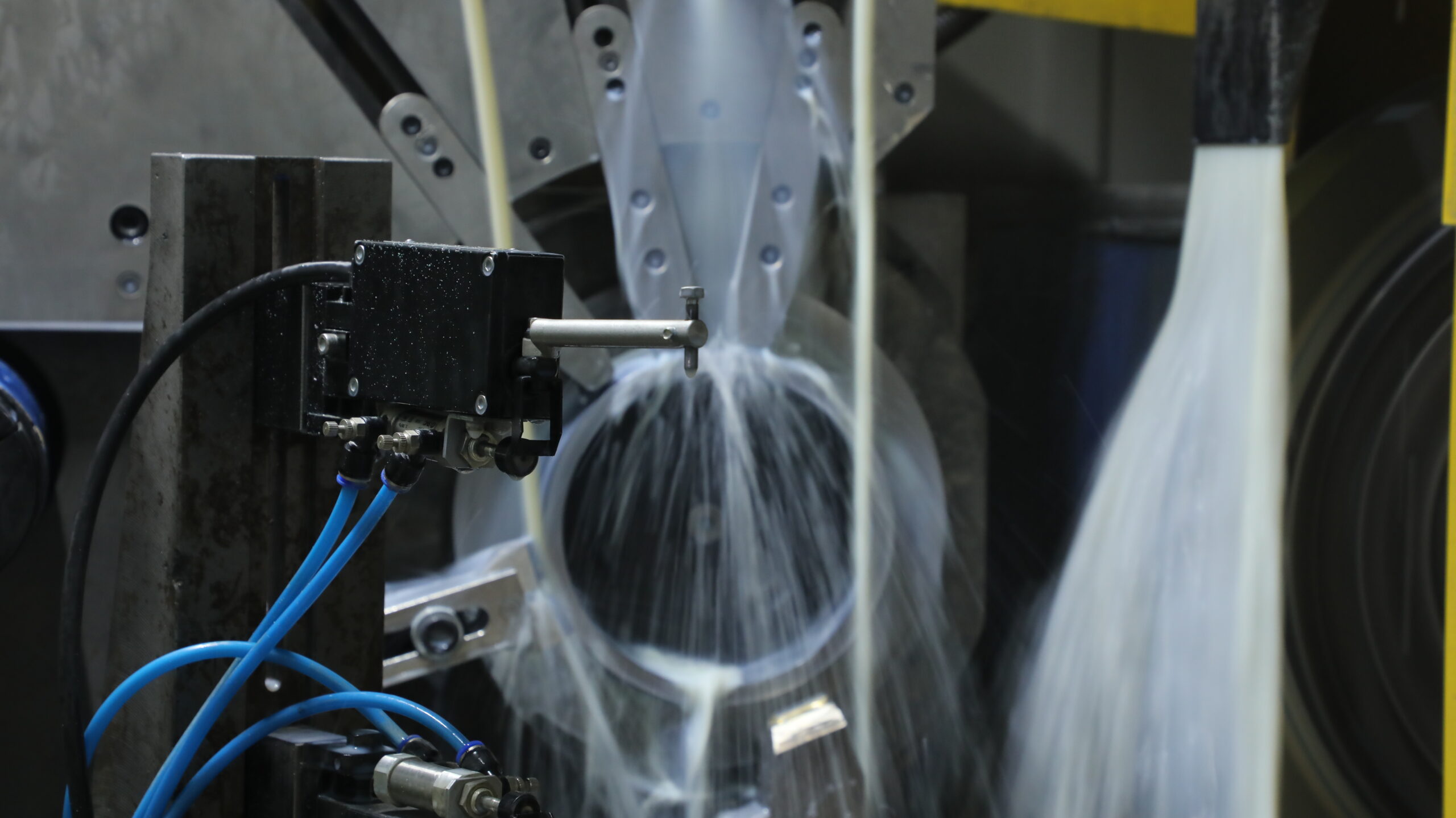
INSOCOAT Bearings: A Specialized Solution / INSOCOAT
INSOCOAT bearings are coated with an insulating aluminium oxide layer on the outer surface of the inner or outer ring, using a complex plasma spraying process to obtain an excellent, high-quality surface finish. The protective sealing layer on the outer or inner ring adds insulation to the bearing, protecting it from harsh, humid environments and avoiding damage caused by high-frequency stray currents. This solution is very cost-effective, with high levels of reliability and uptime in electrical applications.
Comparison of Insulated Bearing Types
The types of insulated bearings mainly include insulated deep groove ball bearings, insulated angular contact ball bearings, insulated cylindrical roller bearings, insulated tapered roller bearings, insulated thrust ball bearings and so on.
| Type | Material | Feature | Application | Representative Models |
|---|---|---|---|---|
| Deep groove ball bearings | Use of ceramic and plastic materials | Low coefficient of friction, high speed, insulation and corrosion resistance | High-speed motors, power tools, generators, etc. | 6318M/C3VL0241 6213-J20B-C4 |
| Cylindrical roller bearings | Outer rings and rollers are made of special insulating material or coated with insulating varnish. | Resistant to high temperatures, abrasion, impact and corrosion | Electric motors, textile machines, food processing machines, etc. | NU318EM NU314 Roller VL0241 |
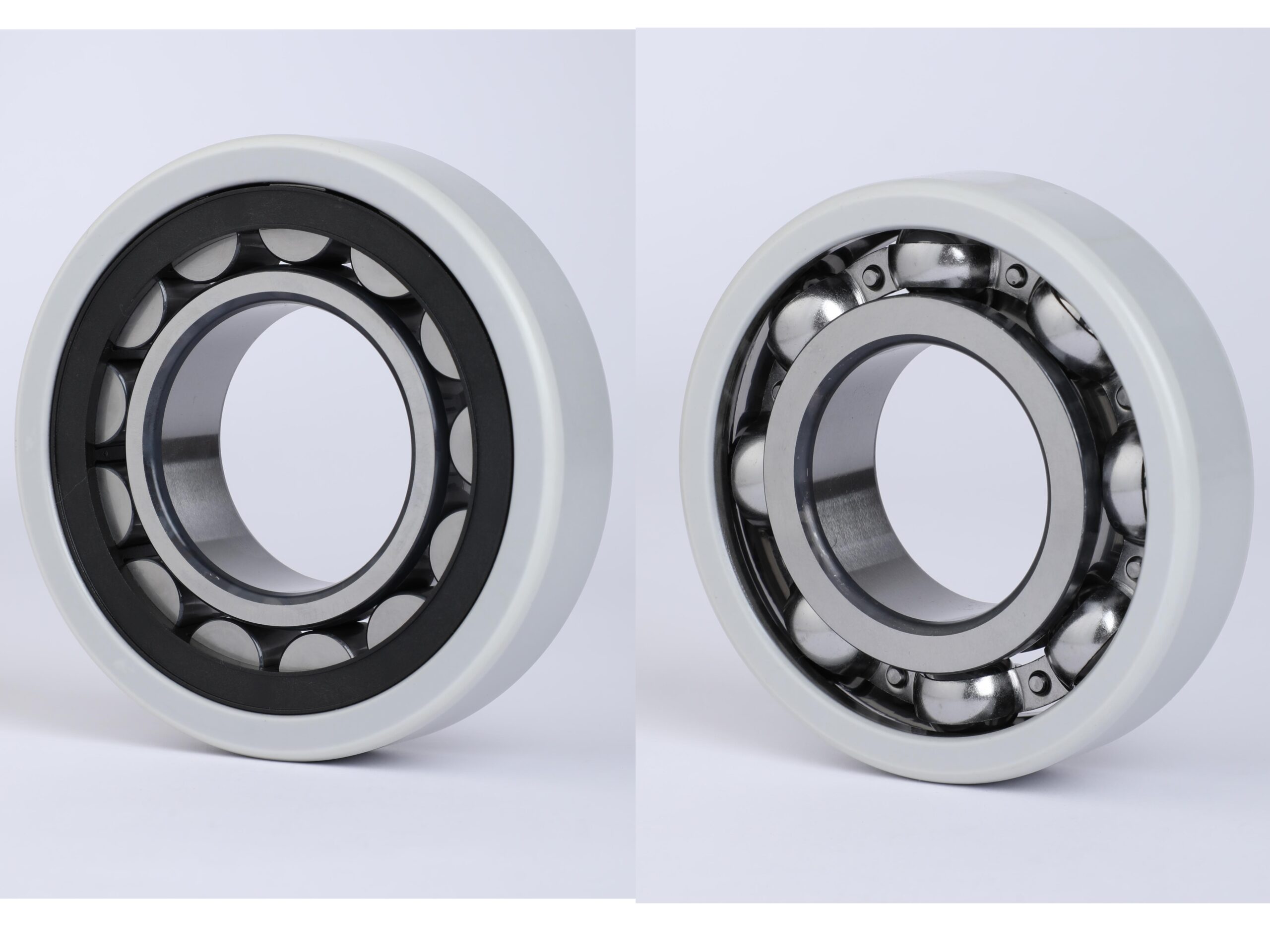
Benefits of Using Insulated Bearings
Insulated bearings have many significant advantages and play a positive role in protecting and extending the life of equipment, preventing galvanic corrosion and reducing maintenance costs.
Prevention of Electrical Current Damage
Insulated bearings use a special spraying process, a layer of high-quality coating on the outer surface to achieve good insulating properties; the bearings can withstand kilovolt levels of industrial frequency voltage. In order to ensure the insulation of bearings, it is necessary to use both DC voltage and AC voltage to test. Insulated bearings prevent damage from shaft currents.
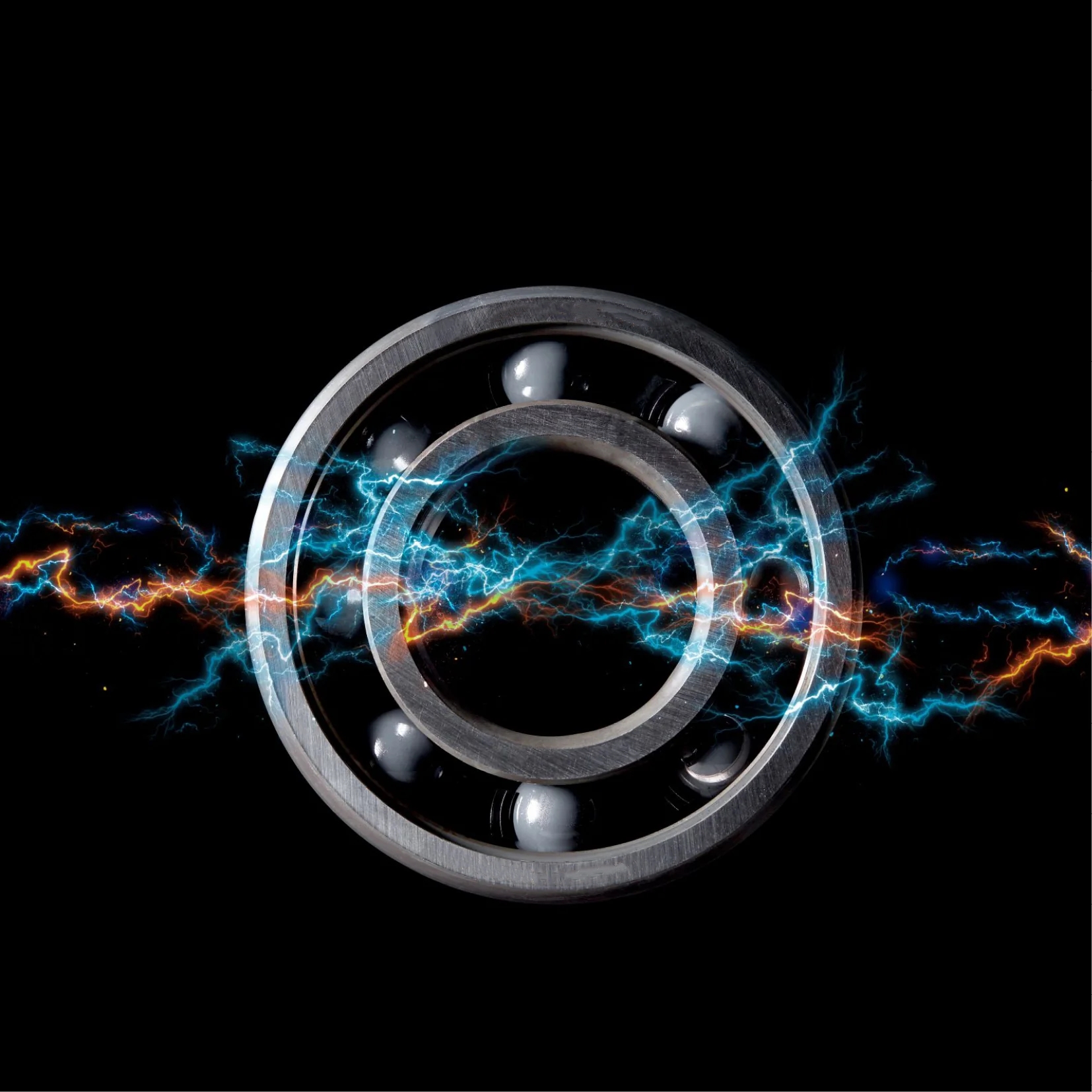
Extended Bearing and Machine Lifespan
The special material and production process of insulated bearings makes them have better performance of high-temperature resistance, corrosion resistance and so on, which can operate normally in a harsh environment. The special material and production process of insulated bearings makes them have better performance of high-temperature resistance, corrosion resistance and so on, which can operate normally in a harsh environment. Electrically insulated bearings play a key role in the protection of equipment because they can avoid the galvanic effect of electric current, and the bearings and machines will last longer.
Improved Energy Efficiency
Because insulated bearings can significantly improve the reliability of motor operation and reduce equipment downtime due to bearing damage, they indirectly improve energy efficiency.
Reduced Maintenance Costs
Insulated bearings provide protection against current damage to the bearings, and the effects of electrical faults are greatly reduced, reducing the number of repairs to the equipment and, therefore, maintenance costs.
Enhanced Performance in Specific Applications
The improved performance of electrically insulated bearings in specific applications is mainly reflected in the advantages of electrically insulated bearings. For example, they contribute to the reliability and service life of the equipment, reducing maintenance costs and the risk of electrical failures.
Applications of Insulated Bearings
Insulated bearings are used in a wide range of applications, such as the power industry, railroad facilities, machinery and metallurgical industries, mining and petrochemical industries.
Electric Motors and Generators
Insulated bearings are mainly used to form electrical isolation between the bearing and the motor shell by installing insulating parts inside the bearing, avoiding the current in the motor from passing through the bearing, causing damage or even welding to the bearing, reducing the energy consumption of the motor and prolonging the life of the motor.
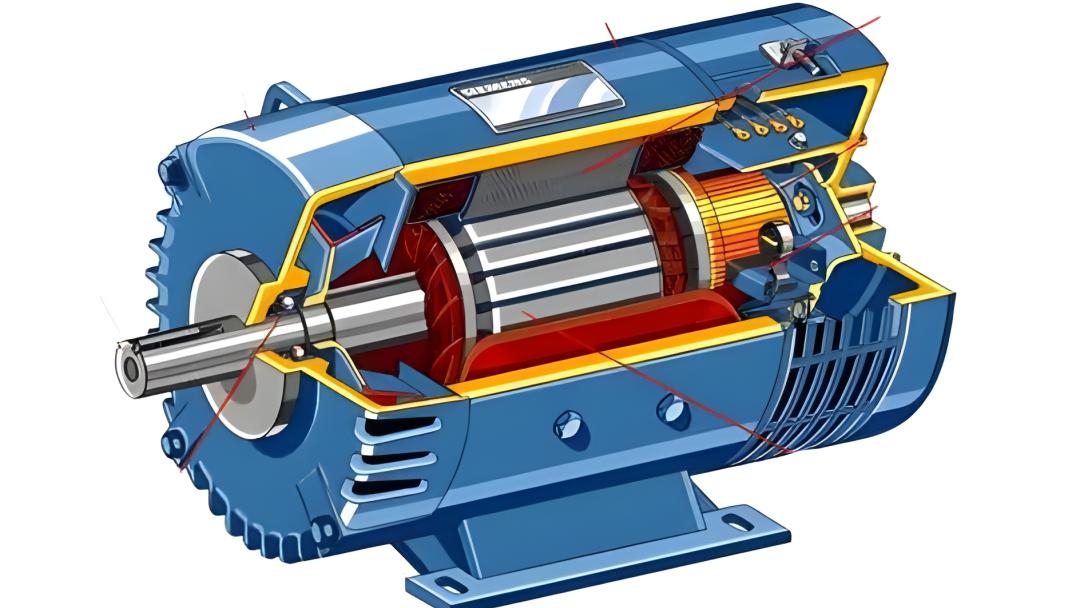
Variable Frequency Drives (VFDs)
Inverters are power control devices that regulate the speed of a motor. VFD-resistant bearings can reduce current interference and damage to the bearings on the frequency inverter. Inverter-grade insulated bearings also help to ensure the normal operation of the equipment.
Railway Traction Motors
The passage of electric current through a traction motor can cause severe melting and friction corrosion indentation crater damage to the bearing raceways, which can be extremely costly to repair. The use of insulated bearings can block the passage of electric current, effectively prevent galvanic corrosion, improve the service life of traction motors, and ensure the safe operation of vehicles.
Wind Turbine Generators
Wind turbine generators, due to the working environment being relatively harsh, the surrounding humidity, temperature and load changes fluctuate greatly, so the choice of electrically insulated bearings in order to better protect the stability of the wind turbine generator and long-term use.
Industrial Pumps and Compressors
Industrial pumps and compressors may produce current corrosion of bearings during operation, generating noise and vibration and affecting the normal operation of the equipment. The good insulation performance of electrically insulated bearings can improve the durability and service life of the equipment.
How to Choose the Right Insulated Bearing
How do I choose the right insulated bearing? There are several factors to consider: the size and direction of the load, the rigidity of the bearing, the rotary accuracy required, and the speed of rotation.
Factors to Consider When Choosing Insulated Bearings
When choosing insulated bearings, you need to consider the following aspects. The first is insulation performance, which is one of the most important characteristics of insulated bearings. When choosing, you need to pay attention to its insulation resistance, voltage resistance and other parameters. Second is the size and precision; different application scenarios require different sizes and precision of insulated bearings. Therefore, the selection needs to be made according to the actual needs. The last is load-carrying capacity and life, which is also an important factor to consider when selecting insulated bearings.
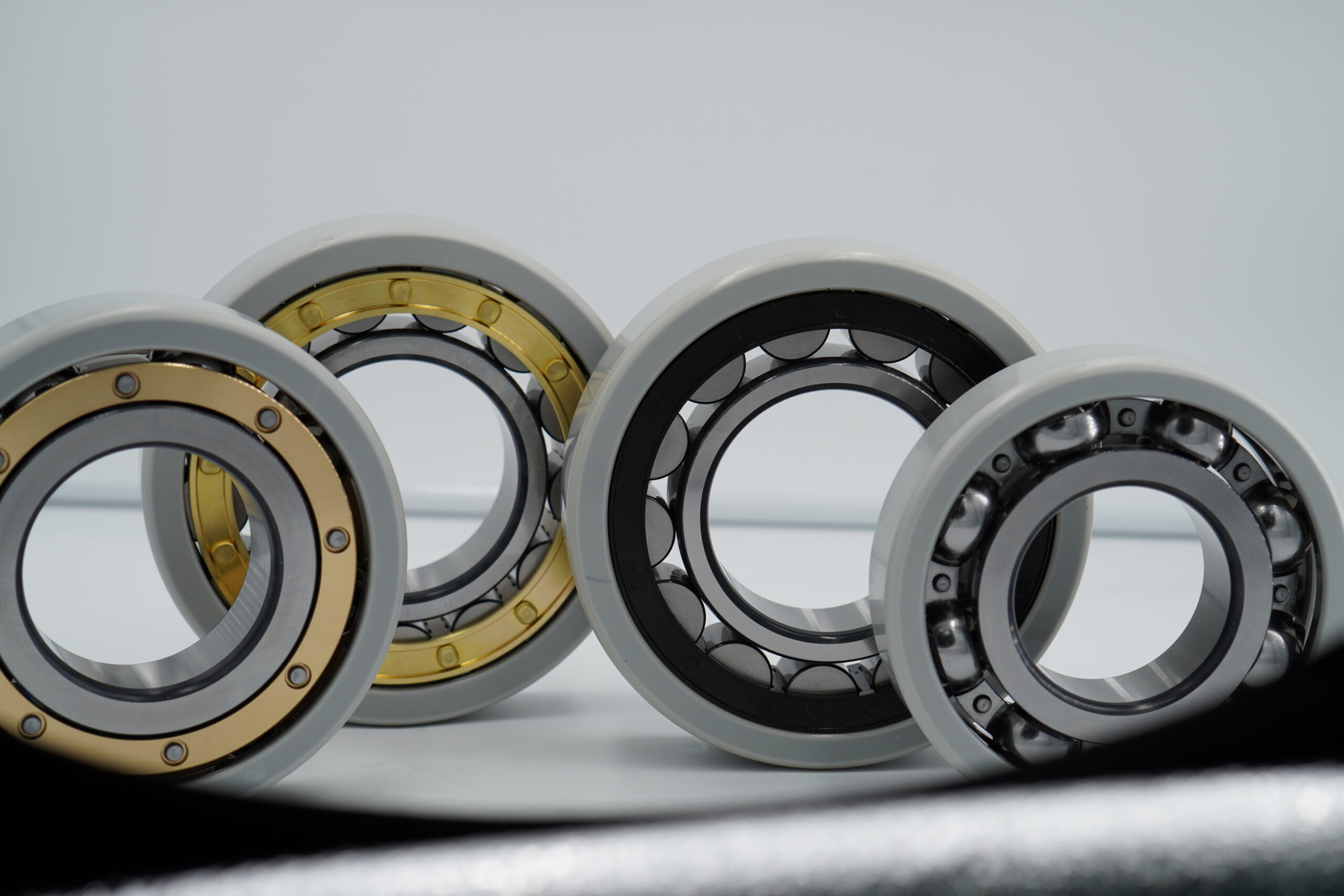
Matching Bearing Type to Application Requirements
How to select good and suitable bearings? First of all, we need to fully understand the working conditions and requirements of the application, including load type, speed, temperature, vibration and other factors. Select the right type of bearing according to the needs of the application. Consider the load and speed, lubrication method. Understand the required bearing materials and match the bearing type to the application requirements.
Customization Options for Specific Needs
- Economic benefits: Customers can customize according to their own needs, reducing some useless functions, more practical and economical.
- Adapting to Complexity: Custom-designed bearings allow the freedom to design according to the functions actually needed without being limited by the specifications of standard parts, thus simplifying other functions, reducing project costs and eliminating potential hassles.
- Environmental factors and special needs: customized bearings can be designed according to the specific working environment to ensure the long-term stable operation of the equipment.
- Maintenance and longevity: Choosing bearings that are easy to maintain and have a long life can reduce long-term operating costs.
Maintenance and Care of Insulated Bearings
Maintenance and care of insulated bearings mainly include the following aspects: cleaning bearings, overhauling the state of wear and tear, adding the right amount of lubricant, and checking the state of bearings on a regular basis. Correct maintenance can maximize the protection of our bearings and equipment life.
Proper Installation Techniques
There are three general methods of mounting insulated bearings:
- Cold assembly/mechanical methods (hammering, screwing, mechanical pressure)
- Thermal installation (electric induction, electric hot plates, other methods)
- Hydraulic method
Whether the bearings are mounted well or badly will affect the precision, life and performance of the bearings. Therefore, special attention should be paid when mounting bearings.
Lubrication Requirements for Insulated Bearings
The key to the lubrication of insulated bearings lies in the requirements of the grease. The grease should have good fluidity, anti-friction, anti-rust and anti-oxidation properties. At the same time, the grease should have appropriate consistency, insulation grade A, E, B and other good performance.
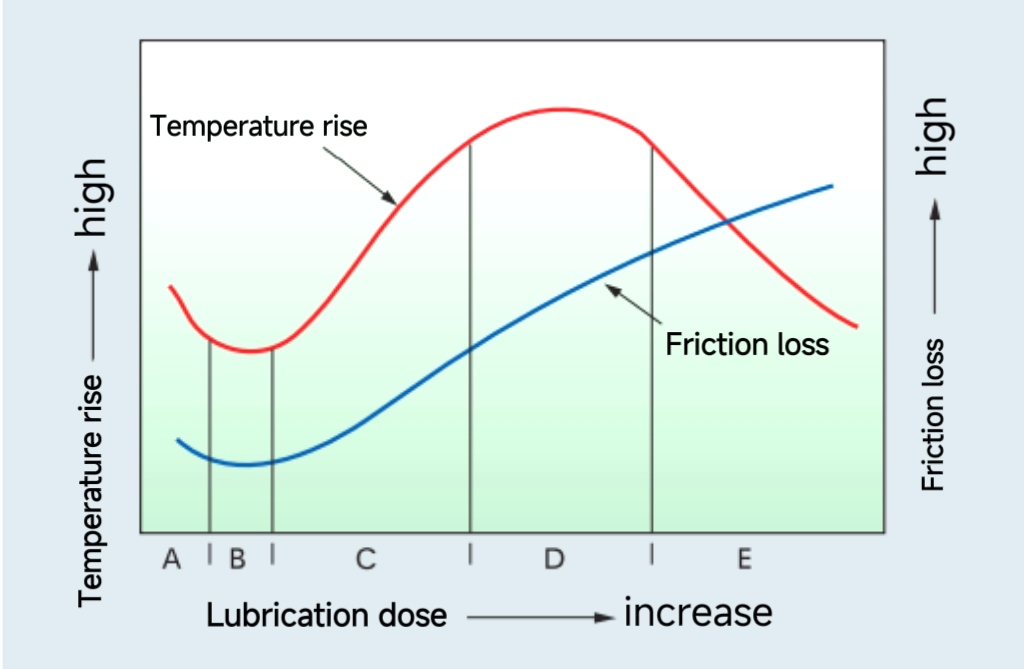
Troubleshooting Common Issues
- Noise fault: Check whether the bearings are damaged and replace them with new bearings if necessary. Adjust bearing clearance to ensure it is within reasonable limits. Check the fit between the bearing and journal and correct it if necessary.
- Temperature failure: Enhance lubrication to ensure that the bearings are adequately lubricated. Check the bearings for damage and replace them with new bearings if necessary. Adjust the bearing clearance to avoid being too large or too small.
- Vibration faults: Check bearings for damage and replace them with new bearings if necessary. Adjust bearing clearance to reduce vibration. Check if the bearing housing ring is deformed, and repair or replace it if necessary.
- Oil leakage fault: check whether the seal is damaged or aging; if necessary, replace the new seal. Ensure that the sealing part is installed correctly, with no loose or misaligned phenomenon.
- Sticking faults: Enhance lubrication to ensure that the bearings are adequately lubricated. Check whether the bearings are damaged; if necessary, replace them with new ones. Adjust the clearance of the bearing to avoid being too large, resulting in jamming.
- Burning Failure: Check whether the bearings are overheated and strengthen the heat dissipation measures. Ensure that the bearings are adequately lubricated. Check whether the bearings are damaged and replace them with new ones if necessary.
Conclusion
Want to make your machines last longer? Want to get more cost-effective insulation bearings? Here are advanced technology and high-quality products. Contact TFL Insulated Bearings today. Here are advanced technology and high-quality products to provide you with satisfactory solutions!
Recap of Insulated Bearing Benefits
Insulated bearings protect mechanical equipment by preventing interference and damage from electrical currents. The bearings have durable performance because of the material characteristics and do not require frequent maintenance.
TFL’s Commitment to Quality and Innovation / TFL
TFL Bearing Company solemnly assures you that the products are manufactured in strict accordance with the international quality standard management system to ensure that every product meets the industry standard and your expectations. The company is committed to product innovation and research so that the products have a longer warranty, are cost-effective, and more accurate.
How to Get Started with TFL Insulated Bearings
You can contact us in any way that is convenient for you. We are available 24/7 via fax or email.
You can visit our office personally. Email us with any questions or inquiries, or use our contact number. We would be happy to answer your questions.
Email Us:info@tflbearing.com /candice004@foxmail.com
Call Us:0086 15806631151
Frequently Asked Questions
What are the main advantages of using insulated bearings?
The main advantages of insulated bearings are increased equipment reliability, extended equipment life, reduced maintenance costs, protection against galvanic corrosion, resistance to wear and a wide range of adaptations.
How do ceramic insulated bearings differ from hybrid bearings?
| Distinction | Materials | Performance | Application | Environment |
|---|---|---|---|---|
| Ceramic Insulated Bearings | Ceramic materials | Anti-magnetic electric insulation, wear-resistant and corrosion-resistant, high temperature and high cold resistance | Electronic equipment, medical equipment | High temperature, strong acid and alkali |
| Hybrid Bearings | Bearing steel + ceramic ball | High speed, high precision, long life | Dental, handpiece, main bearing | High performance, high speed |
Can insulated bearings be used in high-temperature applications?
Insulated bearings can be used in high-temperature applications. Because of the special process used in insulated bearings and the ceramic rolling elements made of Si3N4 material, they have excellent DC resistance at high temperatures, which ensures good insulating properties.
What industries benefit most from using insulated bearings?
The electric power industry, railroad industry, machinery and metallurgy, mining machinery and petrochemical industry, etc., use equipment in need of electrical insulation bearings, from which it benefits a lot.
How often should insulated bearings be inspected and maintained?
Insulated bearings should be inspected regularly every six months, including appearance inspection, insulation performance test, etc. Temporary inspection and repair are carried out under special circumstances to ensure their performance and safety.
